Chlorine – your pool needs it but what’s the best way to get it into the water? While you can add your sanitizer manually, many pool owners prefer to automate the process and not handle chlorine any more than necessary. If you fall into that camp, you’re in good company and you have options. We’ll start with the very basic and end up at the bells and whistles.
Floating Chlorinators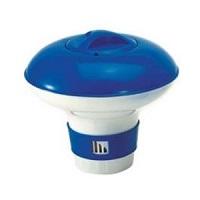
The floating chlorine dispenser is the simplest of all, a plastic vessel that holds about three pounds of 1″ or 3″ chlorine tablets. You load it up with tabs, put the cap back on and chuck it in the pool. Water passes through, slowly dissolving the tablets, while the dispenser continually floats about, dispersing the chlorine.
Floating chlorinators are cheap and easily replaceable however they offer no control over the amount of sanitizer dispensed. If you are looking for quick and easy with no technology, this might be your best option.
Tablet Chlorinators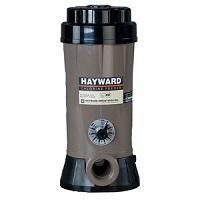
Next up is the automatic chlorinator or chemical feeder – a plastic canister that holds 1″ or 3″ chlorine tablets with connections to attach it to the pool’s plumbing. It is positioned after the filter (or if there is a heater, then plumbed after that). These chlorinators comes in two flavors, inline and offline.
Inline means it is hard plumbed into the PVC pipe. As water passes through the chlorinator, it dissolves some of the tablets and sends chlorinated water to the pool. This type is installed usually during new pool construction or during a plumbing renovation on an existing pool when cutting PVC is no big deal.
Offline offers a less disruptive installation option for existing pools. Instead of cutting out a chunk of pipe, an offline chlorinator is hooked up by drilling a couple of small holes in the PVC plumbing. Thin tubing is then run from the canister to the holes to create the connection. Some water from the pipe passes through these small tubes into the chlorinator and then along to the pool.
Both inline and offline feeders offer a manual control knob to dial up or down the amount of chlorine being dispensed. Automatic chlorinators are a great choice for pool owners who want some automation and control without having to deal with any electronics.
Salt Chlorinators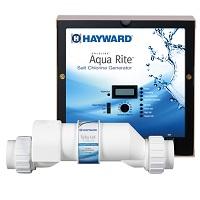
Salt chlorine generators take automation to the next level by actually creating chlorine. This type of system consists of a power supply and a salt cell, along with salt added to the pool water. The cell, plumbed inline with the return pipe, contains coated metal blades which receive a low voltage current. Salt water flows through the cell, causing electrolysis, which splits the salt and water into hydrogen and hypochlorous acid. This acid replaces pre-packaged chlorine sanitizer.
Since salt remains in the water and does not evaporate, only minor salt adjustments are needed in cases of dilution from heavy rains or loss of water due to a high bather load and lots of splashing. The power supply display will indicate any issues with salt and chlorine levels, and also allows “super chlorination” which is the equivalent of shocking the pool.
There are a number of benefits that come with using salt chlorinators. First, they create a gentler form of chlorine which is non-irritating and does not smell like bleach. Second, gone is the hassle of handling and storing chlorine. Third, the milder sanitizer these systems produce is healthier and helps limit exposure to the less desirable components of chlorine. If all of that sounds appealing to you – and you have the budget – a salt chlorinator is a good choice.
Chlorination Through Automation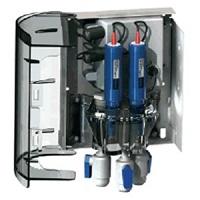
Hayward offers a “sense and dispense” module for two of their pool automation systems, the ProLogic and the AquaRite XL. These modules automate the dispensing of acid to adjust pH and chlorine to maintain the appropriate ORP/chlorine level. The pH can be dispensed either from a liquid acid tank or a CO2 tank. The chlorine is generated through the salt chlorinator that is part of these automation systems. This is the highest tech option, traditionally more common for commercial pools but now also available for you smart home fanatics out there. This will definitely be the most expensive way to go.
If you have questions about the best chlorinator for your particular pool and budget, contact Inyo and we’ll give you our opinions, absolutely free.

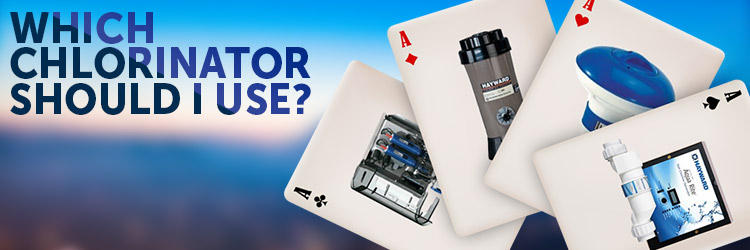







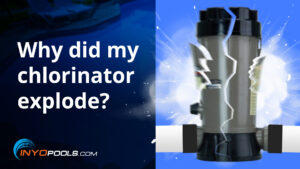
Leave a Reply